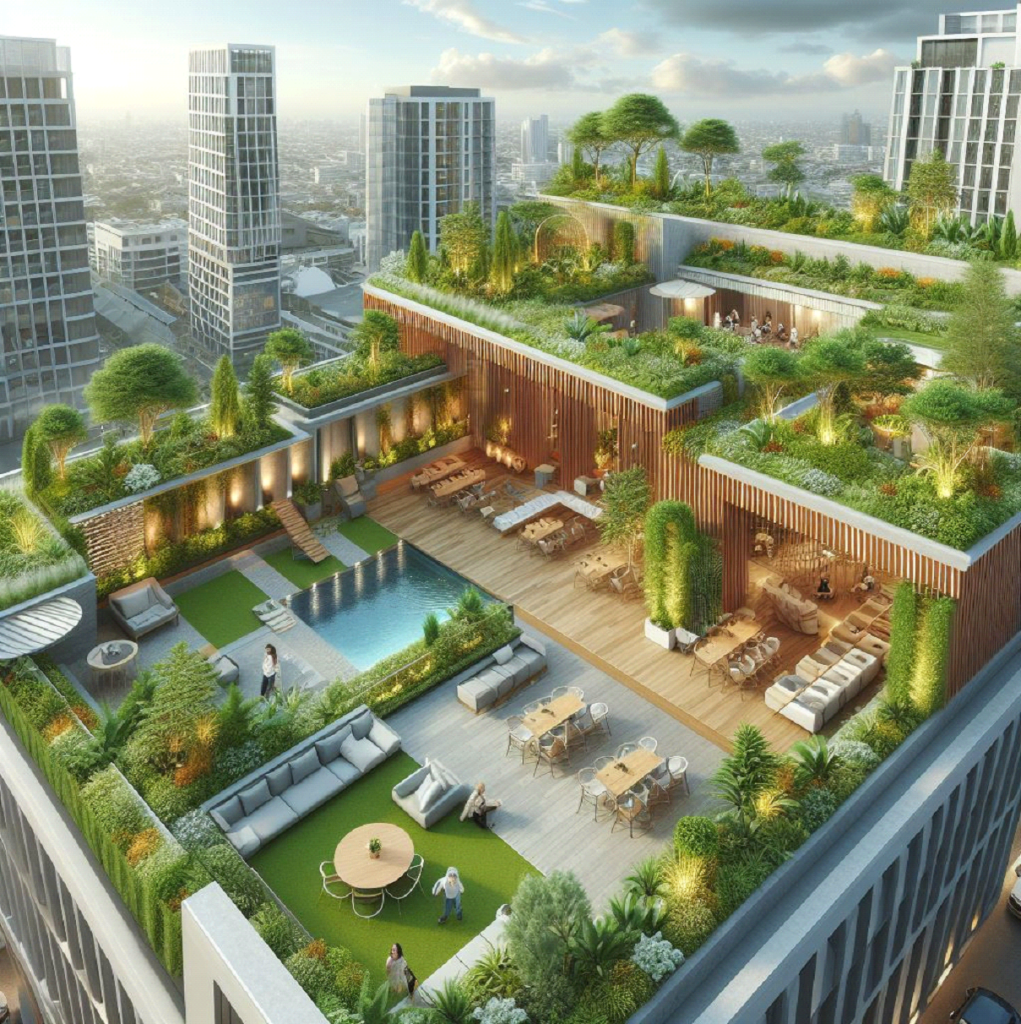Rooftop garden design for urban spaces
In a world of growing urban spaces where concrete and steel mainly stay, the term rooftop garden design has advanced as a conveyor of fresh breath, in a few words. The process of urbanization is often accompanied by the incessant growth of the population in cities. Since these cities are getting more and more crowded, it is becoming increasingly imperative to provide green or open spaces, as it helps in terms of both environmental health and people’s mental health.
Rooftop gardens not only create a relaxing and contrasting space in the busy life of the city, but they also come with so many benefits that are irrefutable reasons why they are dressed as a sustainable and attractive solution for all urban residents. We are going to explore the query: Rooftop garden design for urban spaces. It will be a complete guide in 2024.

Rooftop Garden Design for Urban Spaces: A Comprehensive Way-Out
Rooftop gardening in urbanized settings is a multi-disciplinary, solid attempt that deals with numerous issues in overly populated cities. Indeed, rooftop gardens are viable solutions that utilize rooftops, which would otherwise be unused, into green, serene spaces and create a tranquil haven among the concrete buzzing city. They are versatile as they bring a prize package of good things, starting from their environmental and social benefits to making cities more livable for their inhabitants.
Eco-Advantages of Green Roofing-Design Using Green Architecture for City Spaces.
People involved in rooftop garden design for urban areas are fond of pointing to the upside that the environment benefits from this design. Green areas are not only a natural type of purifier, as they can absorb pollutants and consequently aid in the release of oxygen, which is an advantage for air quality in this staggering area. Furthermore, green spaces play a key role in counteracting the heat island effect, a phenomenon that occurs when areas of high temperature arise due to the predominance of heat-absorbing materials such as asphalt and concrete. Rooftop gardens offer protection, ultimately putting demands on the usage of less energy for defrosting buildings on hot summer days.
Humanized: Having Urban Biodiversity Improvised Through a Rooftop Garden Design for Space in Cities
Rooftop garden design in an urban setting also helps promote biodiversity inside the city perimeter. Using the creation of habitats for a great variety of flowers and planting species, gardens in cities play the role of urban habitats, where birds, butterflies, and beneficial insects are attracted. As a result, aquatic ecosystems are maintained and thrive in urban areas. This is due to the inflow of nutrient-rich water contributing to the overall ecological balance and the conservation of natural resources, which in turn sustains a healthy ecosystem.
Designing Rooftop Gardens for Urban Spaces: Main Features.
The formation of a rooftop garden implies all the necessary and delicate work with the consideration of plenty of essential factors, such as The design phase including load-bearing capacity and drainage systems like the provision of sunshine, among other concerns. Along with this, the choice of the right plant species that can be grown easily under the prevailing local climate and will be healthy even in the rooftop environment is vital to the long-term success of this garden.
Application of environmentally friendly measures while designing green spaces in urban residences.
Sustainability as a principal objective provides the foundation for rooftop garden design in urban areas. Ways to reduce the environmental impact of urban gardens can be done by implementing water-efficient irrigation systems, utilizing recycled materials, i.e., planters and structures, and composting, which can be as effective as these. Besides, the utilization of renewable energy sources (electronic energy) has many applications, including residential and commercial buildings, which can facilitate the total sustainability objectives of the area.
Rooftop Garden Design for Urban Spaces: A Therapeutic Return to Mother Nature.
The green roofs, for one thing, not only benefit the environment but also offer a quiet and relaxing oasis for city residents. These greeneries offer the possibilities of sipping a cup of coffee, exercising, and the construction of the community. This serves as an open space for the community to get together for friendly workout sessions, yoga meetings, and village vacations. It can equally offer an opportunity for someone to relax after a stressful day. On the other hand, surveys revealed that being in nature can contribute to better mental health by reducing stress and becoming a source of wellness.
Conclusions about Rooftop garden design for urban spaces:
Seeing how the urban population increases, known as rooftop gardens, the urban landscape starts being supple, connecting the spine of the city with nature. These scapes of greenery not only lend themselves to healthier and more sustainable urban zones but also foster a touch of nature for city dwellers by offering shelter, solace, and a sense of the natural setting. Through the adoption of rooftop garden design for urban areas, cities will bring about a metamorphosis of an arid, congested environment into a flourishing and thrilling pinnacle of leafy oasis where tall buildings and green spaces live hand in hand.

Αφήστε μια απάντηση